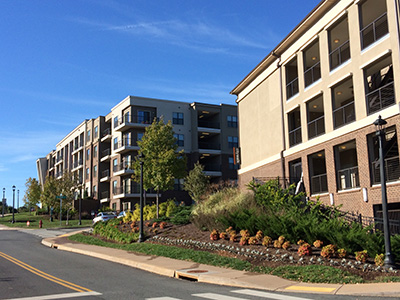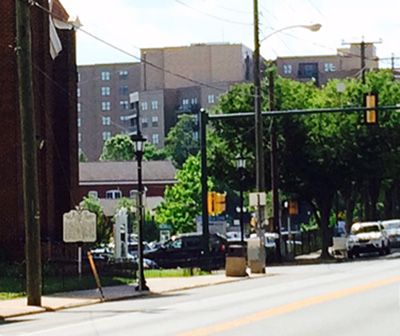Community Planning and Design “Best Practices” Part 5: Substantiate Your Claims
If a blanket up-zoning without conditions for affordable housing and pedestrian infrastructure fails to lower housing costs and instead, precipitates teardowns to enable taller high-end development, accelerates residential displacement and biases our streets towards auto-mobility, then local government policymakers would have not only failed in their mission, but made matters worse. The only way to avoid this outcome is to employ the fifth practical “Best Practices” of five; Define, Engage, Explain, Design and Substantiate—(DEEDS) when crafting a community’s vision and the means to implement it.
Substantiate Your Claims about the following hypotheticals and possible implications of a citywide up-zoning.

• Supply-Side or Trickle-Down Economics and Inelastic Demand. Outdated supply-side theories have not consistently led to decreased unit costs.(1) That’s partly because when the primary goal is to maximize investor profits the incentive is not to produce affordable housing but capture the highest rates of return. According to Troy McMullen, developers expected 80% of units built in 2020 to be targeted for the luxury sector.(2) Investors have also used the new wealth created during the pandemic, to buy and sell real estate at double the price.(3) Supply-side economics may also fail to work in a “college town” when older houses in historically Black neighborhoods close to job generators like universities, hospitals and downtowns, are exactly what wealthier, highly skilled, typically white, in-migrating consumers want regardless of the age, condition or selling price of the property. Because demand is “inelastic,” Charlottesville Low Income Housing Coalition (CLIHC)’s critique of “trick-down” economics rings true.(4)
• Land Value Inflation. When mid to high-rise luxury housing is dropped into modest neighborhoods, it not only takes scarce land resources out of circulation, it sends a clear market signal that these places are ripe for investment. In that case, increased supply may decrease rents regionally while rents often rise locally.(5) Parisa Norouzi of Empower DC agrees, “More supply might drive down rents in some cases from $2,500 to $2,200 “but it doesn’t go down to $900, which is what the most low-income people need.”(6)

• University Affect. When universities fail to build on-campus student housing, the market responds. Single-family detached homes in near-university neighborhoods, are bought by investors and converted into student housing or large, luxury student housing projects are developed off-campus. In the case of Charlottesville such conversions are not subject to fee-based inspections or sales taxes, while its resident university is not required to make payments in lieu of taxes (7) or build affordable housing for city residents. Luxury student housing has been built off-grounds, that some believe has inflated land values.
• Density is Not Height is Not Affordability. Conflating building height with density is a misleading oversimplification. Increased building height does not automatically promote affordability or decrease unit prices because taller buildings are more expensive to build and energy intensive to maintain. “Height has a direct impact on costs with lower-cost wood-frame construction limited to 4 stories. Above 5 stories, most buildings are constructed of concrete and/or steel at a much higher cost/SF. For that reason, Charlottesville rents do not support the construction of mid- to high-rise residential buildings except for student housing adjacent to the university, high-end condominiums and possibly luxury senior housing.”(8) Buildings over 4 stories that require steel and concrete structural systems also embody more carbon, require more energy intensive systems like elevators(9) and cannot be cooled by street trees.(10) The same development capacity can be achieved by reducing setbacks and on-site parking requirements, without resorting to increased building heights, yet this finding by another consultant team in 2017 has been ignored.(11)
1. “The End of Friedmanomics,” Zachary D. Carter, The New Republic, June 17, 2021
2. “Searching for and finding the right apartment,” by Troy McMullen, Washington Post, July 2, 2020.
3. “The New Real Estate Normal,” by Eli Saslow, Washington Post, July 19, 2021
4. “Why Building More Market Rate Housing Will Not Solve Charlottesville’s Housing Crisis,” https://affordablehousingcville.org/.
5. “Why We Must Build,” Rick Jacobis, Shelterforce, March 10, 2016.
6. “Affordable housing plans see D.C. leading the way,” by Robert McCartney, Washington Post, May 31, 2021.
7. Blue Ribbon Commission Report 2014
8. Bonus Height/ Financial Analysis by PES, April 2018.
9. Architecture 2030 and Net Zero Code, https://architecture2030.org/zero-code/
10. Seven Rules for Sustainable Communities, by Patrick Condon, copyright Island Press, 2010
11. FBCI, DPZ CoDesign and PES consultant team’s kick-off “charrette” for the SIA’s Phase 1 of the FBC on September 14, 2017
